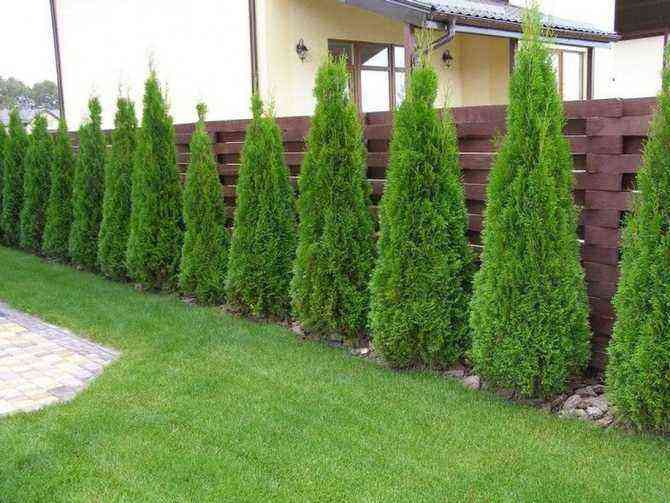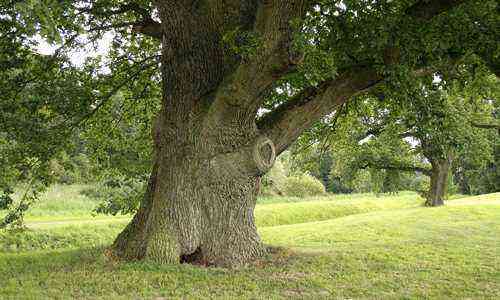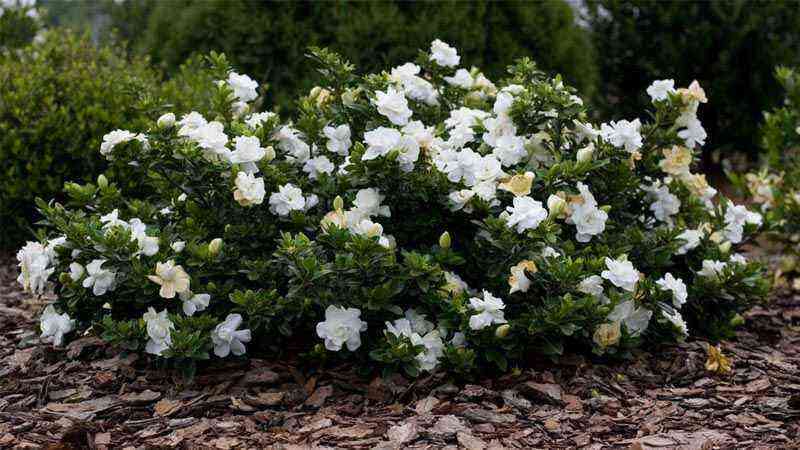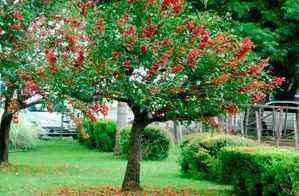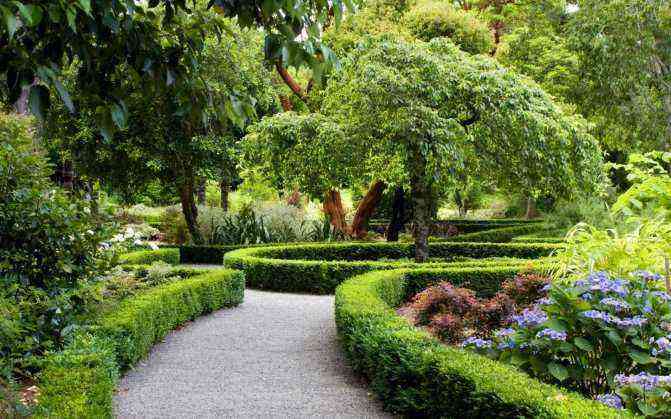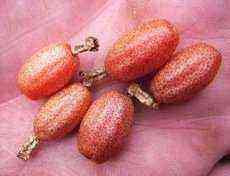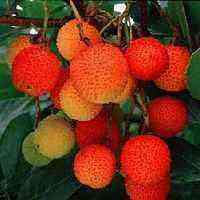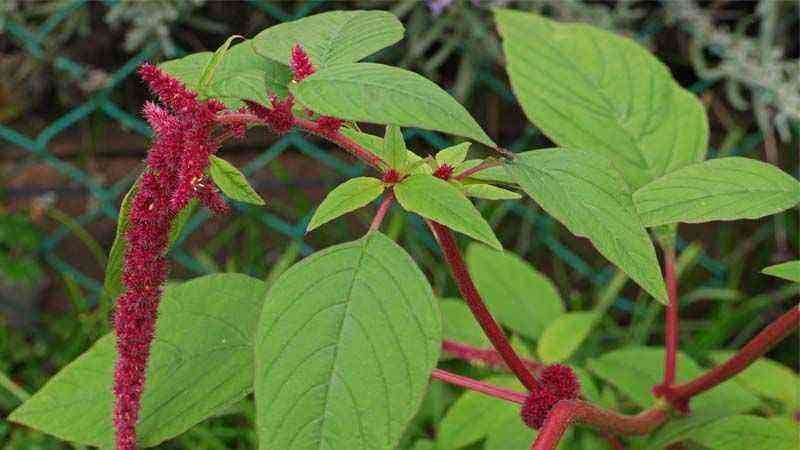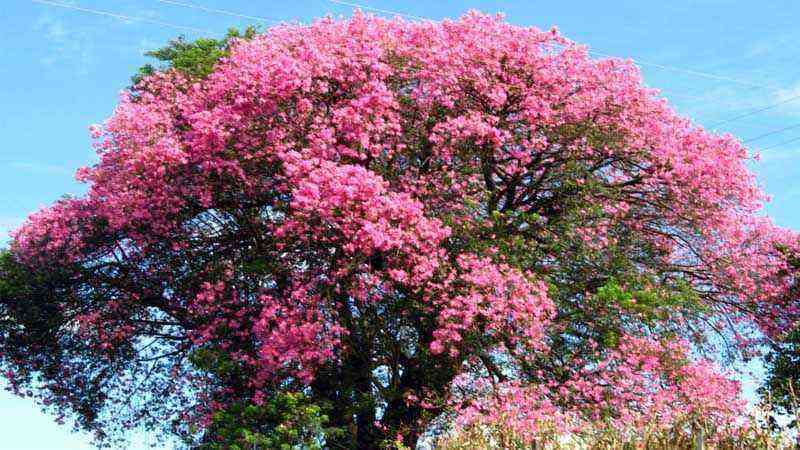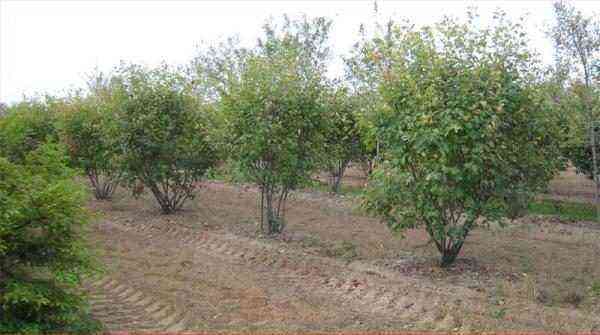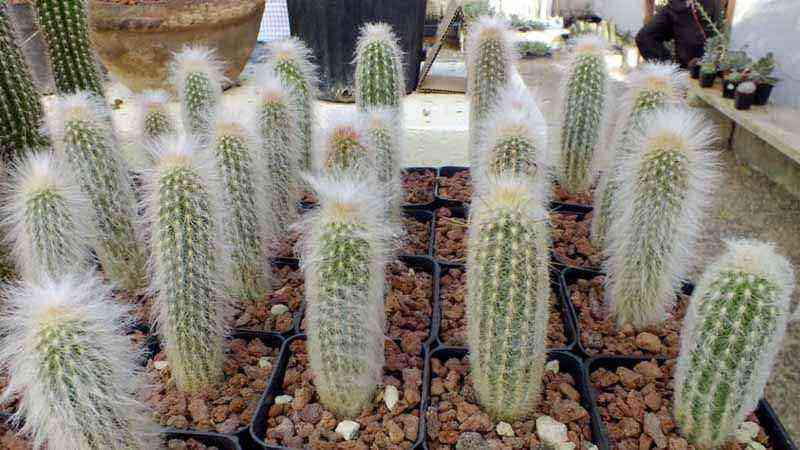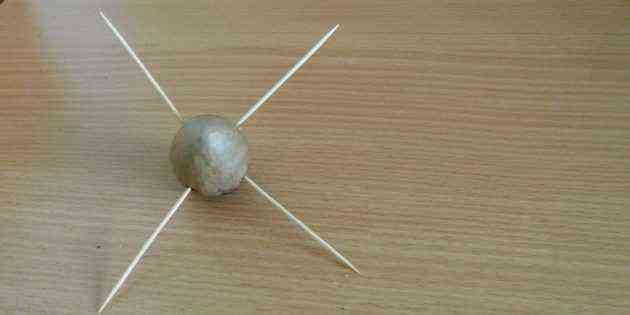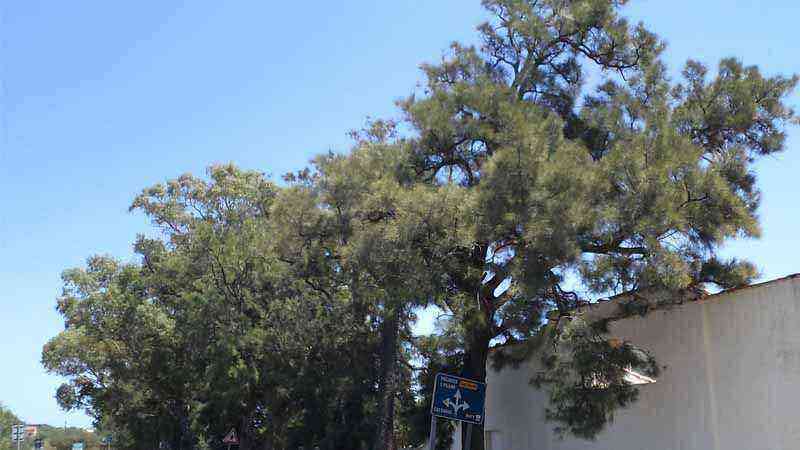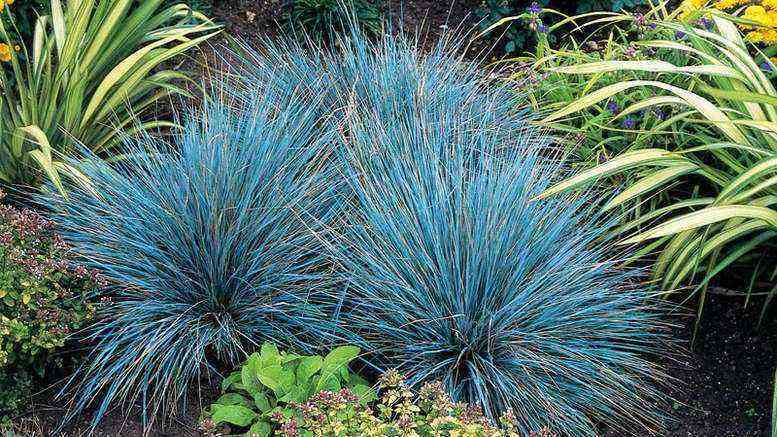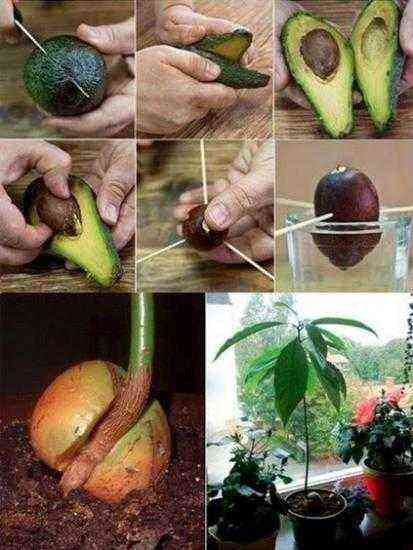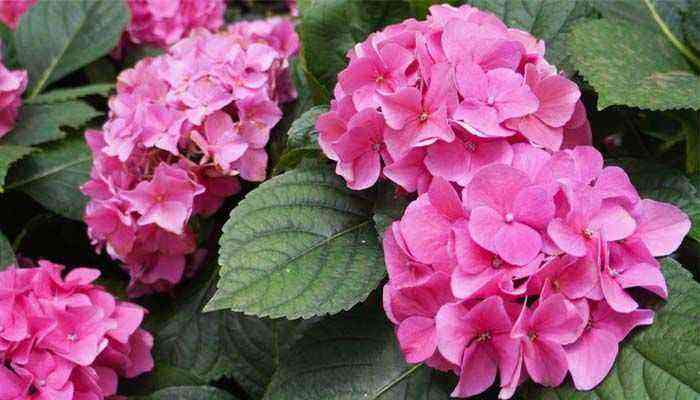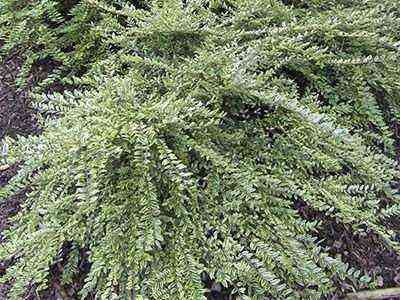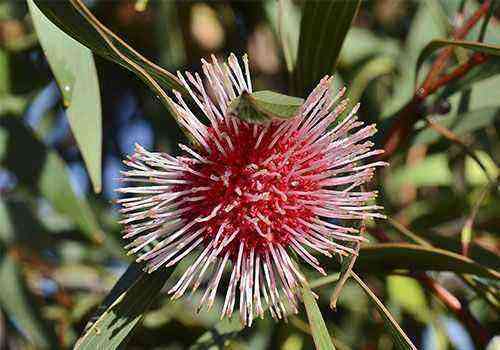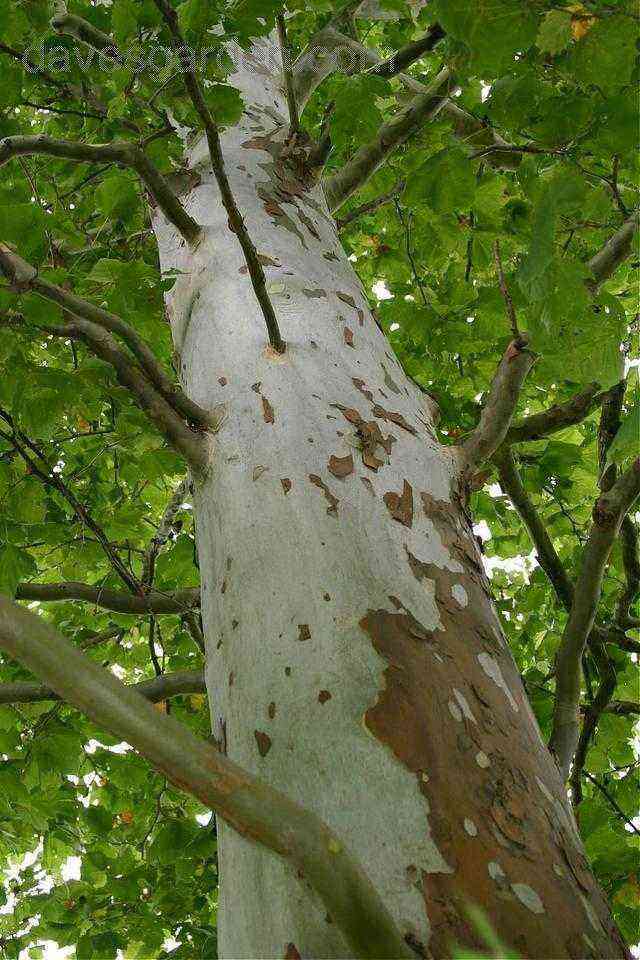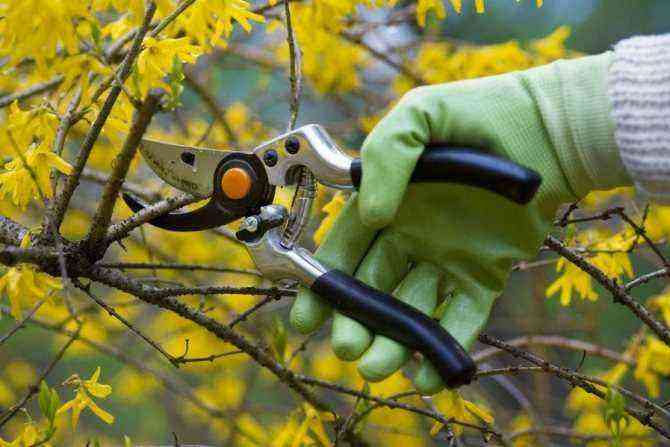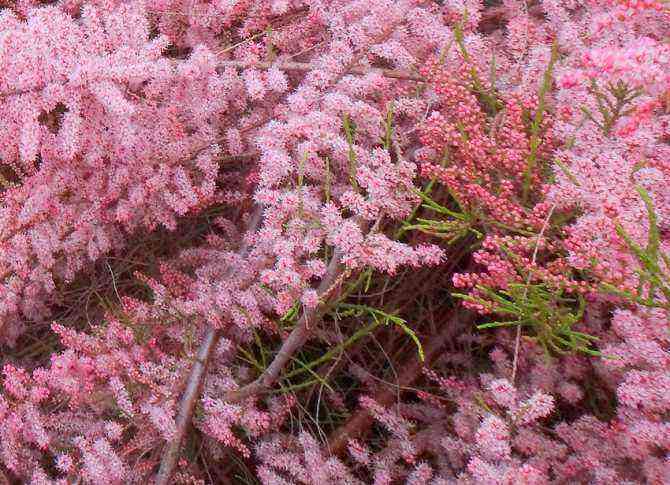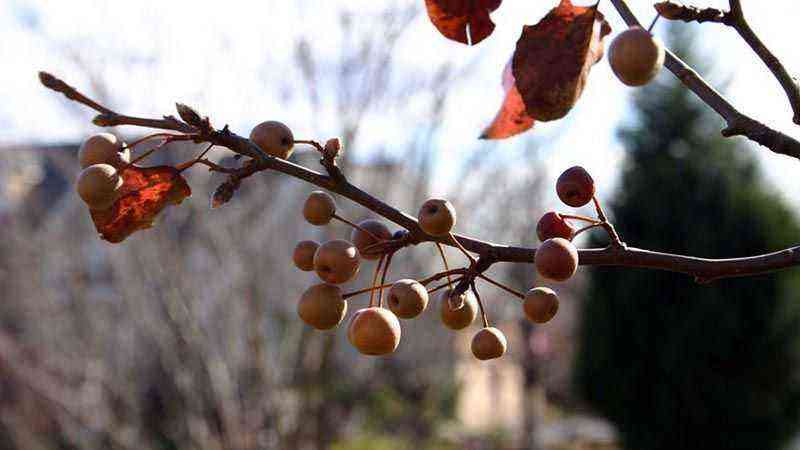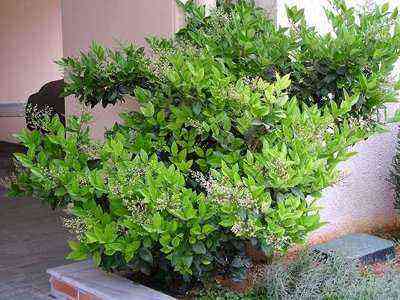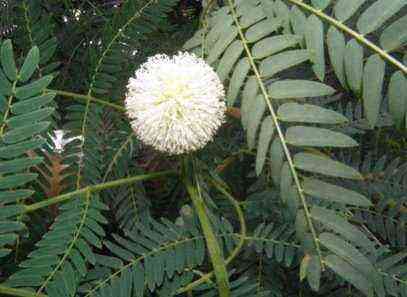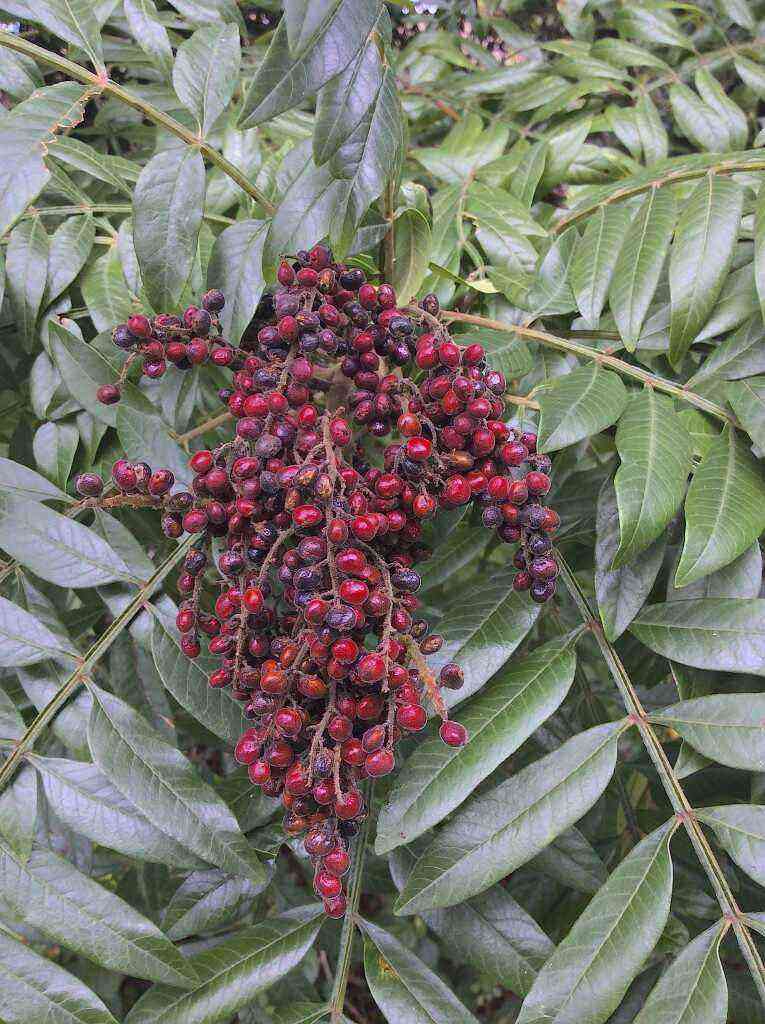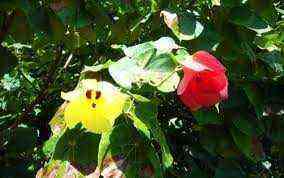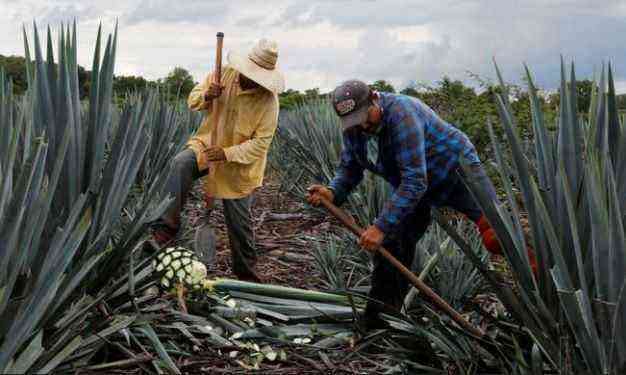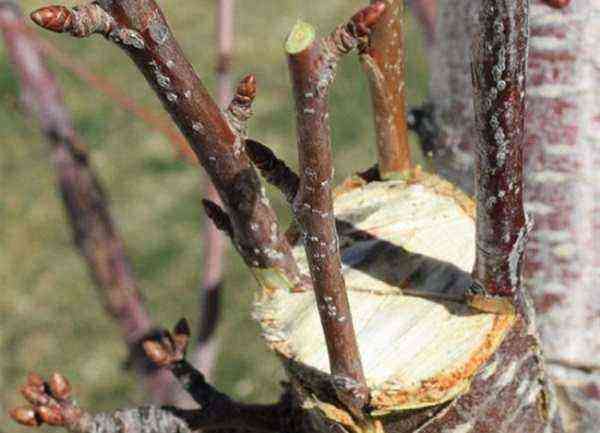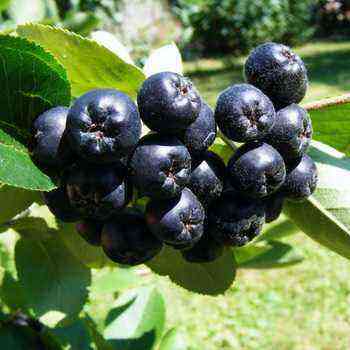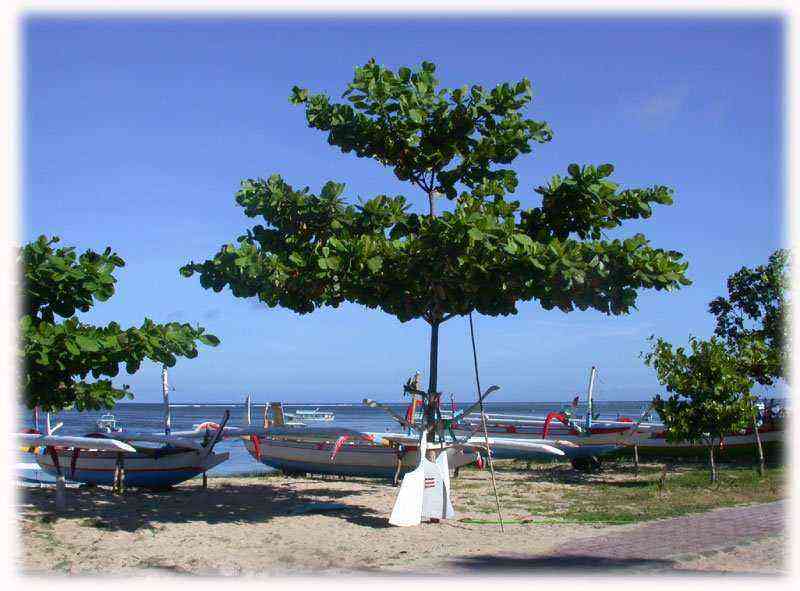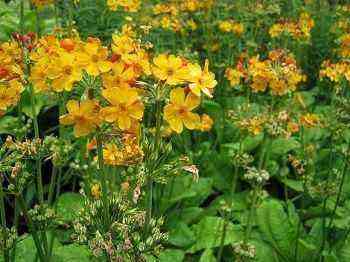Description of the eastern thuja (Thuja orientalis), or flat-flowered biota (Platуcladus)
China is considered the birthplace of the plant. Thuja has several names that apply to this species. The most common are:
- thuja oriental (in Latin Thuja orientalis);
- flatworm biota (Platуcladus);
- eastern biota (Biota orientalis).
Thuja hedge in landscape design
Note! In some nurseries and agricultural shops, the eastern thuja is positioned as the western one, but these are two different species.
This is an evergreen coniferous tree with a superficial root system, slow-growing, under favorable conditions it reaches a height of 18 m, under unfavorable conditions it takes the form of a shrub. The bark is thin, peeling off in strips of various lengths, red-brown in color. The color of the bark of the branches is yellow-red.
The needles of young specimens are acicular, at the age of 2 years, scaly, pressed against the branches. In summer, the color of the needles becomes light green, in winter – brown. Male and female cones are formed on the plant, differing in shape and ripening time.
Male cones (microstrobiles) are smaller (up to 3 mm in length) yellow-green in color, female (megastrobilis) reach 2 cm and have a bluish bloom. In autumn, seeds that do not have wings ripen in female cones.
Specific features
The eastern biota is the only representative of the monotypic genus Platypus of the Cypress family. The closest relatives in this family are cypress and juniper.
Varieties of flat-flowered can diversify the landscape of the local area due to the height, color of the crown and its structure.
The 5 main types of thuja include more than 100 varieties. These are the views:
- western;
- eastern;
- Korean;
- Japanese
- folded.
Thuja as a highlight of the garden
Thanks to the unique decorative features, the flat thuja will become a real decoration of the site. Using plants, you can create a hedge. Plant species are perfectly combined with other coniferous representatives, which allows you to create unique compositions.
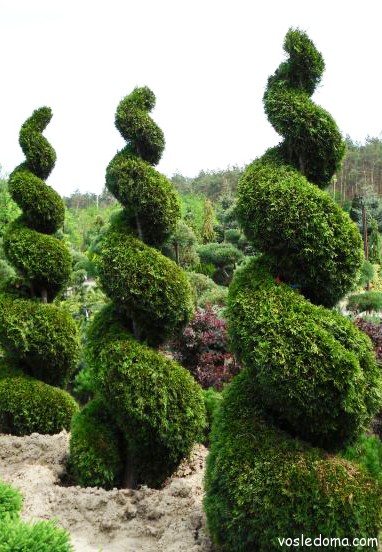

Biota easily lends itself to crown formation by cutting
The plant is responsive to care, easy to form. You can choose the type based on the desired design solution.
Pay attention! The height of the western thuja ranges from 1,5 to 15 m.
Diseases and pests
When growing oriental biota, gardeners often face problems such as disease and pest attacks. Their occurrence is evidenced by the deterioration of the external condition of the tree. In some cases, diseases and harmful insects can even cause the death of a crop.
The following pathologies are possible:
- Late blight. The disease is quite serious, it affects the upper part of the root system. As a result, the color of the crown turns gray, the leaves gradually wither. The reason may be stagnant water, lack of drainage or improper installation. To prevent the development of the disease, it is recommended to treat the soil under the plant with phytoncides.
- Brown shute. Provoked by fungal spores. When damaged, yellowing of the scales of the cones is observed, then this process extends to the shoot completely, as a result of which it dies. It is important to cut off the damaged parts of the bush in a timely manner and burn them. To prevent the development of pathology, lime is added to the soil, and the shrub itself is treated with Fundazol in summer and autumn.
- Fusarium root. Fungi also contribute to the onset of the disease. Their activity is caused by excess moisture. When the top of the tree is affected, they turn yellow or turn brown. Treatment requires treatment with “Zircon” and a 2% solution of “Fundazol”.
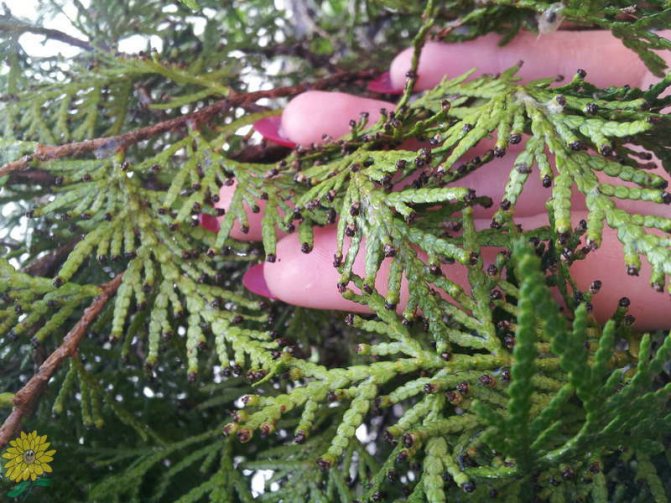
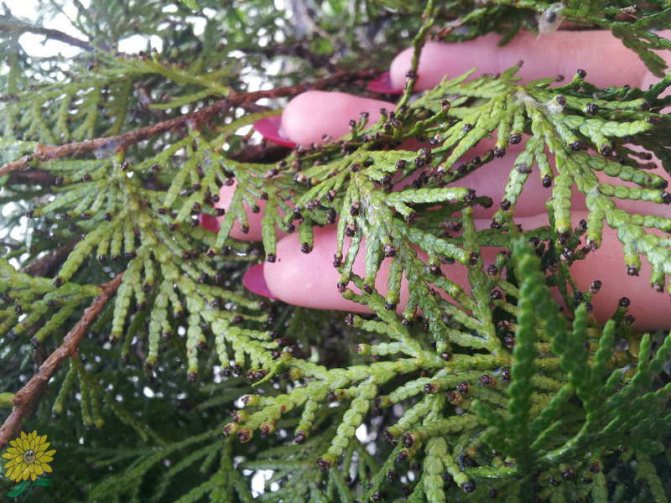
Brown shute
The eastern biota can be attacked by such insects as aphids and false shields. They pose a great danger to her. When the pseudothyroid gland is affected, spots of a yellowish tint are formed on the leaves. If aphids have settled, the plant begins to turn yellow and fall off.
To get rid of pests, it is necessary to carry out treatment with such drugs as “Karbofos”, “Rogor”. Each tool is accompanied by instructions, in accordance with which you need to act.
Groups of thuja varieties by growth rate, shape and color of the crown
Tuya Aurea Nana oriental – description of the variety
Thuja biota has predominantly green needles. The diameter of the crown can reach 10 m, and the height of the plant is 15 m. Unlike other species, eastern thuja is afraid of frosty winters.
Currently, there are several varieties of cultivated plants of the eastern thuja, the most popular of them are described below.
Tuya Aurea Nana: description and dimensions
This is a dwarf type of decorative thuja with an unusual golden color of the crown. Shows very slow growth. For a year, it is no more than 9 cm.
Thuja orientalis Aurea Nana is a lush dwarf shrub
Yustinka
Dwarf thuja of a columnar shape. In terms of its decorativeness, it differs little from the rest. But this type of biota is the most frost-resistant, undemanding to climatic conditions.
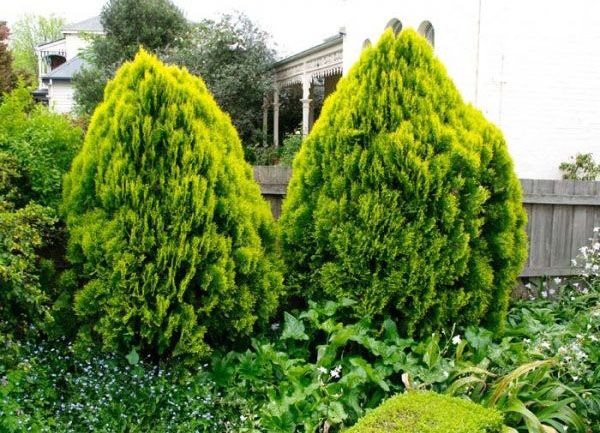
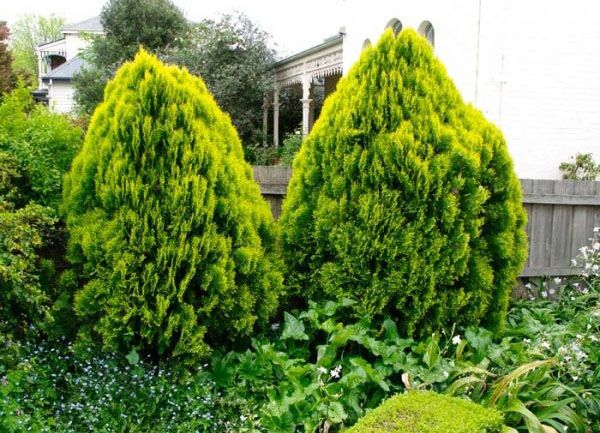
Justinka has a columnar crown
Morgan
Morgan is the most profitable option for landscape design solutions. The variety was bred by scientists in Australia. A characteristic feature is the change in the shades of the needles depending on the season. So, in summer it has shades from emerald to lemon, in winter it becomes orange-red.
Note! The plant resembles a pyramid in shape. It does not require crown formation, since it has a dense structure.
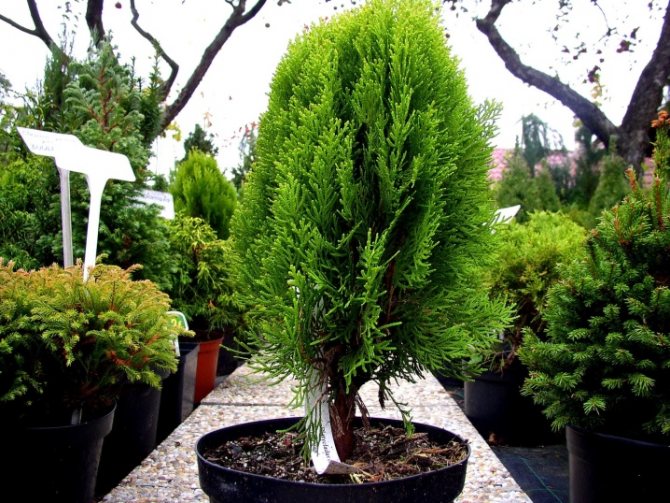
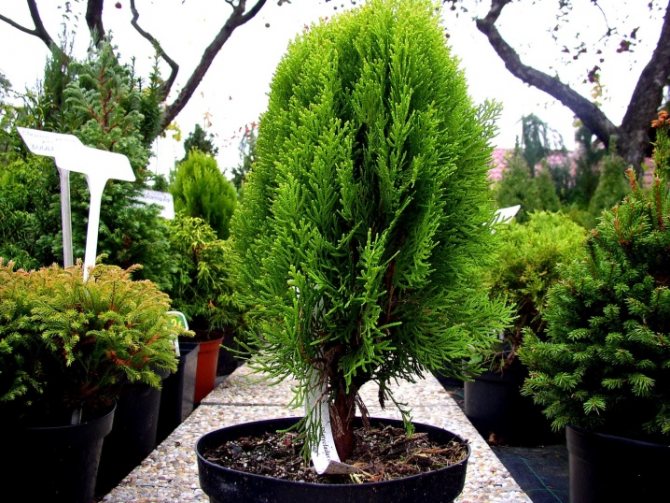
Morgan is ideal for country houses, does not require pruning due to the structure of the foliage
Pyramidalis
Pyramidalis is a columnar biota that needs to be planted in shaded areas. This type of plant does not tolerate direct sunlight. Maximum height 4 m.
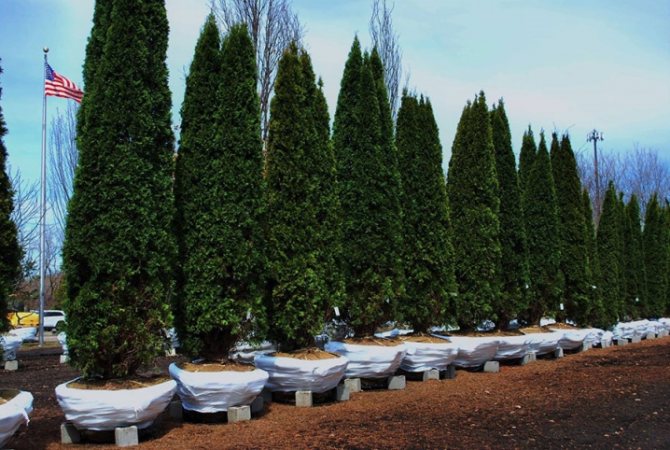
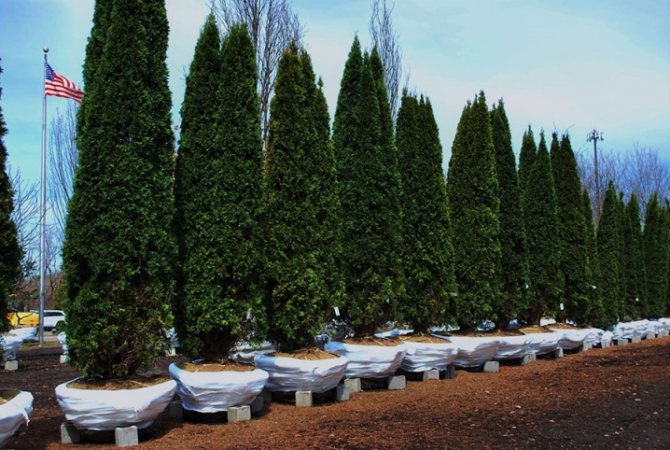
The slimmest thuja from the eastern group – Pyramidalis
Golden Minaret
This is an ornamental plant species that is very sensitive to drafts and light. With sufficient sunlight, the crown of the shrub takes on a bright lemon color.
Book
The book is often used by thuja landscape designers for the construction of a hedge. Easy to shape. Differs in compactness. The average plant height is 3 m.
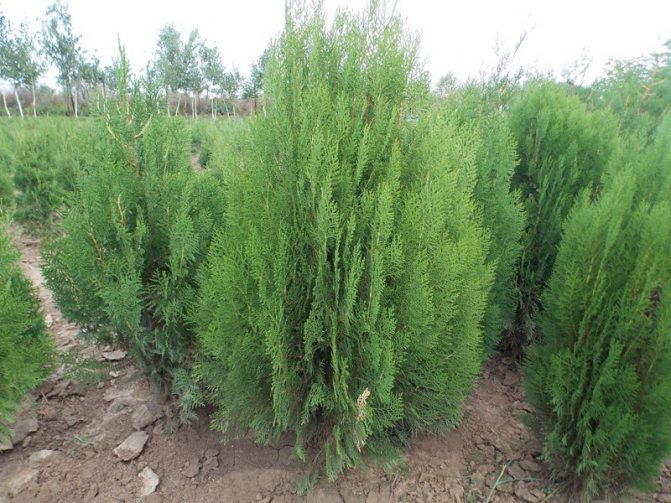
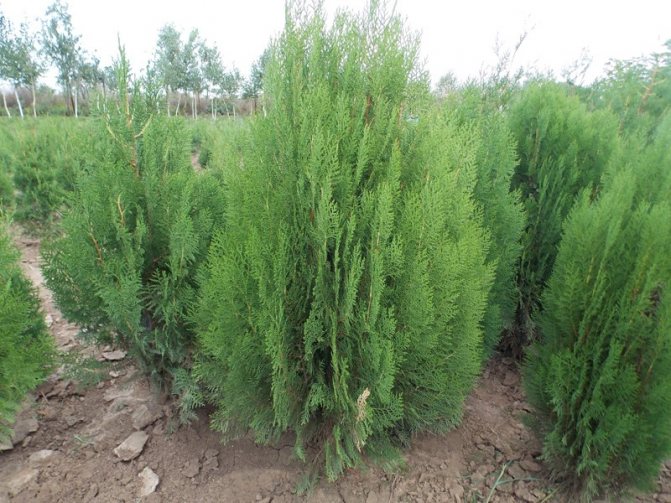
Variety Book – compact plants that are used by designers for arranging a hedge
general description
Oriental varieties of thujs are trees with a dense crown of a pyramidal or ovoid shape.
They are distinguished by their small height, which rarely exceeds 10 meters, and a slow growth rate.
The color of its crown is dark green in the warm season and brown in autumn and early spring. Thuja cones are reddish brown in color.
These types of wood are distinguished by numerous positive qualities. Due to the large amount of essential oils contained in their leaves, they have a good effect on the human body, saturating it with various beneficial volatile substances.
Some of the most popular varieties of oriental tui are Biota and Harmony.
Growing Eastern Thuja
Thuja responds well to watering, especially sprinkling and irrigation. In the first 1-1,5 months, seedlings should be watered at least 1 time per week. You will need to pour about 10 liters of water under each seedling.
Tuya Holmstrup (Holmstrup) – description and dimensions
Care consists in timely feeding, loosening the soil, pruning and watering.
The flatworm is fed with cow dung, diluting it in cool water in a ratio of 1:20. A healthy, well-developing plant is fed with manure once every two years. You can also use nutritious mineral mixtures for feeding.
Loosening is carried out in order to avoid soil compaction to a depth of no more than 10 cm. It is better to mulch the trunk circle.
A shaping haircut is needed to create compositions from the period when the biota reaches the age of three. Due to the dense stem, this procedure is not required. Young plants have a pyramidal shape, and with age they become more rounded and lush.
Important! Dried branches and their areas with signs of disease should be cut off in time. If you neglect the necessary care, thuja weakens, loses its decorative properties.
Requirements for climatic conditions
The eastern biota does not tolerate severe winters. It is a thermophilic plant that prefers places well lit by the sun. Thuja feels great in the climatic conditions of the southern regions, but with proper care it tolerates the winters of Central Russia well.
Features of growing thuja in Siberia
The cultivation of thuja in Siberia became possible thanks to the emergence of frost-resistant varieties. These are mainly plants of the western thuja group. Eastern biota in Siberia is rarely used in landscape design, since it is thermophilic.
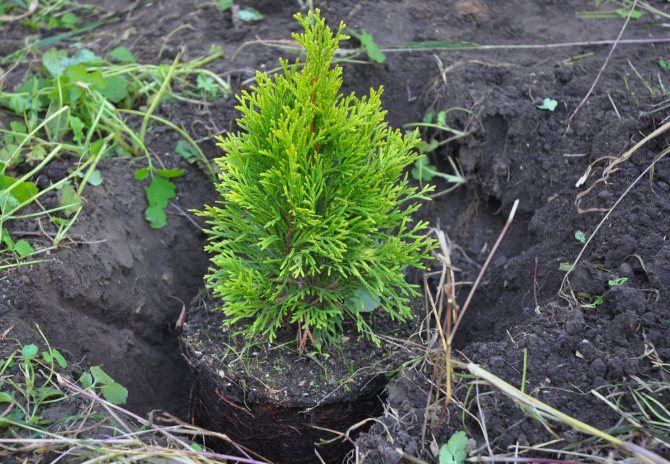

Planting in Siberia is possible only for frost-resistant varieties.
Frost-resistant varieties require special care, but the undoubted advantage is that the stem is easily formed and does not need frequent pruning. In Siberia, special attention should be paid to feeding and care.
Pay attention! From the group of eastern platycladus in Siberia, the following varieties are suitable: Aurea Nana, Harmony with an obligatory shelter for the winter.
Correct seating and seat selection
Young flat plants are picky about the composition of soils, while adult plants are more unpretentious. To plant seedlings in open ground, you need to prepare the following nutrient mixture:
- sod soil – 2 parts;
- peat – 1 part;
- cut – 1 piece.
Given the superficial location of the roots, the hole should be dug 80 cm deep and 60 cm wide. The bottom of the planting hole needs to be filled with drainage by a quarter. When planting, the root collar is not buried.
Important! The distance between plants depends on the purpose of the planting. For a hedge, it should be at least 1 m.
Some plant varieties require special planting. For example, Pyramidalis does not tolerate direct sunlight, which negatively affects the color of the needles. The Golden Minaret variety painfully tolerates drafts, so a place for planting these plants should be chosen protected from the winds.
Terms of planting
In order for the plant to better adapt to climatic features, the spring period from early April to May is considered a favorable time for planting it.
Thuja can be planted until early September. The later the landing takes place, the less time it takes to acclimatize. The biota planted in autumn will need to be carefully prepared for wintering and covered with covering material.
Reproduction of biota
The flat plant is propagated by seeds, cuttings or dividing the bush. Seed propagation is applicable mainly to non-hybrid varieties, since the seeds do not retain their parental characteristics. The most optimal are vegetative types of reproduction.
seed
The seeds of the eastern thuja are harvested in the fall, in October-November after the opening of the female cones. The collected material is stratified by placing it in a refrigerator or under the snow. In the spring, after the snow has melted and stable positive temperatures have been established, they are sown in open ground.
Second-year buds can be plucked from trees and ripened at home to prevent seed loss. Brown mature megastrobils are torn off in August-September and await their disclosure.
Before sowing, the seeds need additional processing:
- keeping the inoculum for 20 minutes in a slightly boric solution of potassium permanganate;
- keeping seeds in a damp cloth for swelling.
For seedlings, seeds are sown in boxes with prepared soil, consisting of a mixture of humus and peat in equal proportions. The material is laid out on the ground at an equal distance from each other and sprinkled with soil mixture 0,5 cm thick. The soil is regularly moistened, preventing it from swamping or drying out. Twice a month, young seedlings are watered with solutions of complex mineral fertilizers.
Planting in a permanent place is carried out when the seedlings reach a size of 40-50 cm.
Cuttings
Branches 2-3 years old and about 15 cm long are suitable for cuttings. Branches must be broken off (do not cut off!) Along with a part of the bark. The place of the break on the branch is treated with a solution of heteroauxin. The stalk is planted in the soil, deepening 2,5 cm.
The optimal soil for planting cuttings is a mixture of equal parts of sand, peat and leafy or turf soil. The soil is preliminarily watered with a slightly borous solution of potassium permanganate for the prevention of fungal infections. The container with oriental thuja cuttings is covered with film or plastic bottles to create a greenhouse effect.
The soil with cuttings is watered by sprinkling or spraying. Airing and hardening of the planting material is carried out after rooting – they are opened for 1-2 hours, gradually increasing the time.
Division of the bush
The method of reproduction by division of the mother plant is relevant when a tree or bush has several leading trunks. The biota is divided into several parts so that each trunk has a part of the root system. The place of the cut is sprinkled with ash, crushed activated carbon or limestone.
The division is carried out in the spring with a sterile instrument. The plant is dug up either before the procedure or immediately after it, uprooting only the separated part. The resulting parts are planted immediately on the prepared places, having previously sprayed them with growth stimulants. Caring for the cuttings is the same as planting seedlings.
Breeding methods for eastern thuja
Thuja Teddy (Teddy) western – description of the variety
Thuja propagates by seeds, but it is very laborious. It will take almost 5 years to wait for the formation of full-fledged seedlings. And this method has only one advantage – from the very beginning, the plant adapts to the soil in which it will grow.

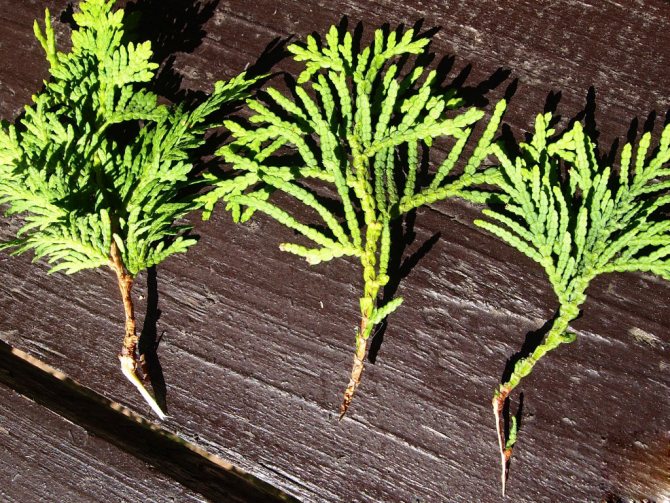
Cutting
In addition, the biota is propagated by dividing the bush and grafting. For cuttings, shoots of a 2-3-year-old plant are used. Take a process with a heel – a section of the mother tree.
The best option is planting an oriental thuja purchased in a nursery. Before choosing the type of seedling, you need to familiarize yourself with the conditions that you need to create for the plant.
Pharmacological properties
The eastern biota has healing properties, therefore it has long been used by folk healers to combat various pathological conditions. In ancient times, people used thuja-based remedies to treat inflammation, infectious diseases, and rheumatism.
The drugs were taken as a prophylaxis. Therefore, the plant was called the “tree of life”.
The general list of useful properties of biota, identified by doctors, is as follows:
- Suppression of the inflammatory process;
- Destruction of pathogens;
- Stopping severe bleeding, especially uterine and intestinal;
- Increased muscle tone;
- Strengthening the immune system;
- Elimination of fungal spores, for example, with lichen;
- Improving the discharge of sputum in respiratory diseases;
- Cauterization of skin rashes, for example, with chickenpox.
Eastern thuja is still used in folk medicine for various pathologies of the body in the form of infusions, decoctions.


The oriental biota is not only an excellent decorative plant, but also a medicinal plant.
Preparing for the winter period
Before the onset of cold weather, the plants huddle high, sprinkling the trunk near the ground with a layer of peat. The crown is lightly pulled together with a rope and a protective covering is made with a non-woven material.
Instead of agrofibre, you can use spruce branches to cover the thuja. When the snow falls, a snow shelter is formed on the spruce branches.
Placticladus tolerates frosts down to -20 ° С. A mark on the thermometer scale at −25 ° C is a threat to the plant. Thuja is very difficult to tolerate sudden changes in temperature during the winter thaw.
Important! It is necessary to remove the shelter from the overwintered bush gradually, opening the stem to protect the needles from sunburn.
When planning landscape design, the characteristics of each variety are taken into account: features, stem size and height, preference for growing conditions. Subject to these simple rules, the eastern thuja will delight for a long time with delicate greenery and a chiseled shape.
Contraindications for use
Folk remedies made on the basis of eastern biota are not allowed to be taken by everyone. The plant has a number of contraindications, which include the following:
- Carrying a child;
- Childhood;
- Breast-feeding;
- Epileptic seizures.
When taking a medicine based on biota, it is necessary to strictly observe the recommended dosages and the duration of treatment. If you abuse the herb, the risk of exacerbation of pathologies of the gastrointestinal tract and spleen will increase.
Before use, you should consult a doctor in order to timely identify the individual plant intolerance.
